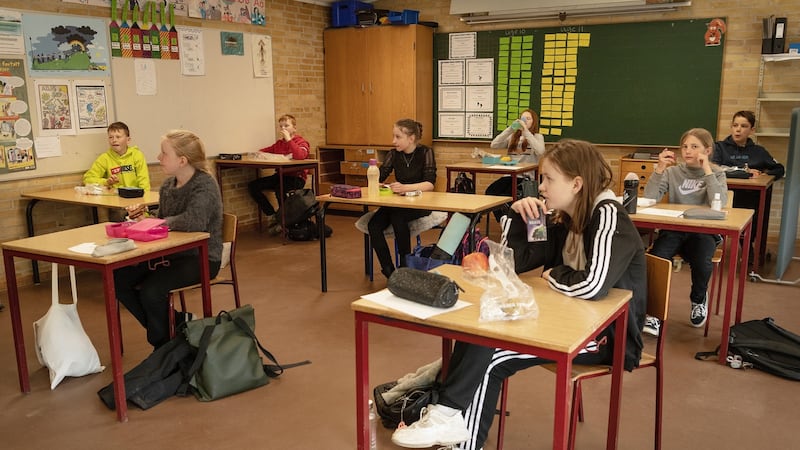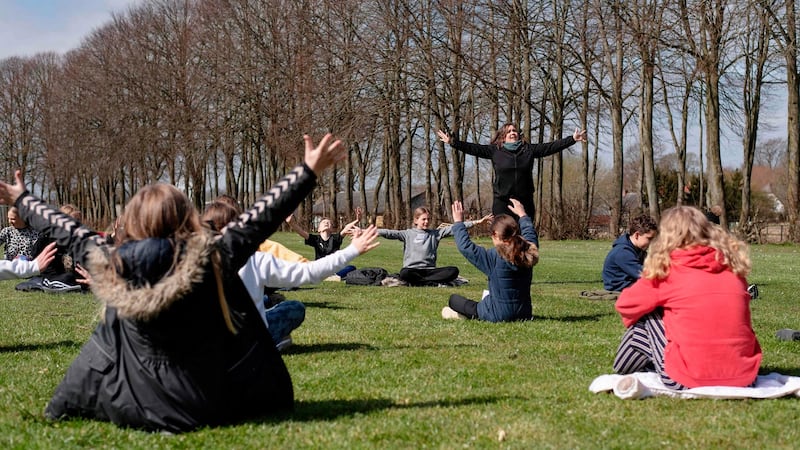When eight-year-old Isabella Ivraeus returned to school in the Danish city of Aarhus on Wednesday, it was hard to miss her excitement – or that of her parents.
“She was so happy to see her friends again – they hadn’t seen each other apart from FaceTime for five weeks,” said her father Poul-Erik Ivraeus, who runs his own investment business from home in Denmark’s second-largest city.
As his wife is a doctor, Ivraeus had to look after their two children – Isabella and five-year-old Theodor, who is at kindergarten – much of the time and he admitted it had been hard to work efficiently. “It felt like Saturday every day,” he said: “You can’t open businesses if you keep the kindergartens closed. It’s the only way to reopen society.”
Denmark became the first European nation to reopen its primary schools and kindergartens this week after a coronavirus lockdown, in a move likely to be heavily scrutinised across the continent as other countries examine how and when to lift restrictions.
The decision was taken after what Mette Frederiksen, the prime minister, called the "surprising" success of its lockdown, with daily deaths declining after reaching a peak two weeks ago. The country has reported 321 deaths and 6,879 cases.
Starting on Wednesday, hundreds of thousands of under-12s – who are less able than older students to study independently at home – returned to classrooms that are both familiar and different.
Schools have been left to decide themselves how to manage the main requirement – that pupils are kept 2m apart. Classes have been split in two in much of the country, with one teacher for every 10 or 11 students. Children are sent outside as much as possible, even for some classes, and play exclusively in subgroups of students from their class to limit the risk of spreading the virus. Some students have been allocated a shorter school day to allow others to access resources at different times.

"It has been a huge task to make all the plans and logistics. The students have been very patient and the reopening has been without any problems. All our routines are new and everything takes more time, but we will find our way," said Jette Bjorn Hansen, headteacher at Isabella's school, Frederiksbjerg.
Teachers had seen “all kinds of feelings” from pupils, Hansen said. But most had been very happy to return to school.
‘Guinea pig’
But not everybody was so keen. A Facebook group called “my child should not be a guinea pig for Covid-19” soon got tens of thousands of members. While many schools said they had attendance rates over 90 per cent, some parents chose to keep their children away.
Jannie Duunkjaer, who works for an animal protection charity, has decided to keep her six- and seven-year-olds at home but send her 12-year-old son to school in Allerod, about 30km north of the Danish capital Copenhagen. "It worries me a great deal to just send my children to school. Basically because we have been told repeatedly for over a month to keep our distance, how serious this virus is and how extremely important it is to not take all these new restrictions lightly," she said.
As so much about the virus is unknown, Duunkjaer said she believed any reopening should start with “people who understand the rules and guidelines and why they are there”. Her oldest child was allowed to return as he “is able to manage all the restrictions”, she said.

“I worry that the young children in Denmark are being used as guinea pigs,” she added. “No one knows for sure what the effect will be with this opening.”
Other countries are set to follow Denmark soon. Germany will start opening its schools early next month, while Norway's kindergartens will open on Monday and parts of its primary schools a week later. Primary schools in Sweden were never closed. Kindergarten workers in Norway will each look after three children aged under three or six aged between three and six. They will avoid contact with other children.
Practical challenges
Cecilie Harrits, the Aarhus head of Skole og Foraeldre, an organisation for primary school parents, said many of the challenges were practical.
As classes had been split in two with separate classrooms and teachers, there was a potential lack of space and teachers. Schools were renting tents or using scout facilities for teaching and public playgrounds for break times, she added.
Problems could also arise if staff became ill because staffing was so tight, Harrits said.
For now, she said, the children were coping well with their new school life. It was harder for parents having to weigh reports that young children were scarcely at risk from Covid-19 with their sense of how precious they were.
“We have to balance good sense and feelings all the time,” she added. “We all have rational and irrational thoughts.” – Copyright The Financial Times Limited 2020









